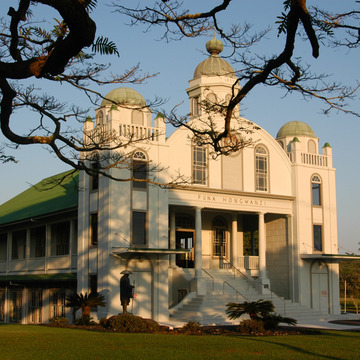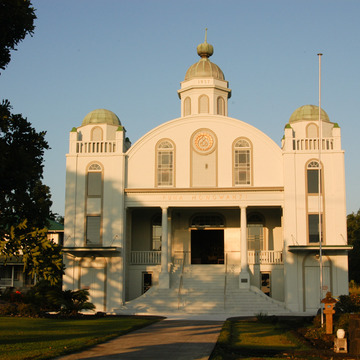Bold and imposing, this temple is an excellent example of a Buddhist temple in Hawaii inspired by the precedent set by Honolulu's Honpa Hongwanji Temple (OA80), which drew upon Mughal architecture for its design. This two-story redwood building, with a metal-clad facade, is capped by a domed, octagonal, central tower and a pair of domed corner towers. A semicircular false front surmounts a Doric-columned entrance porch. Fanlights over the windows lend classical touches. The wisteria crest atop the blind arch centering the false front is that of the aristocratic Fujiwara clan, the insignia of the Hongwanji. The concrete raised basement houses a social hall, and the sanctuary is above it. Lanai along the sides of the building provide outdoor circulation at the temple level.
You are here
Puna Hongwanji Temple
If SAH Archipedia has been useful to you, please consider supporting it.
SAH Archipedia tells the story of the United States through its buildings, landscapes, and cities. This freely available resource empowers the public with authoritative knowledge that deepens their understanding and appreciation of the built environment. But the Society of Architectural Historians, which created SAH Archipedia with University of Virginia Press, needs your support to maintain the high-caliber research, writing, photography, cartography, editing, design, and programming that make SAH Archipedia a trusted online resource available to all who value the history of place, heritage tourism, and learning.







